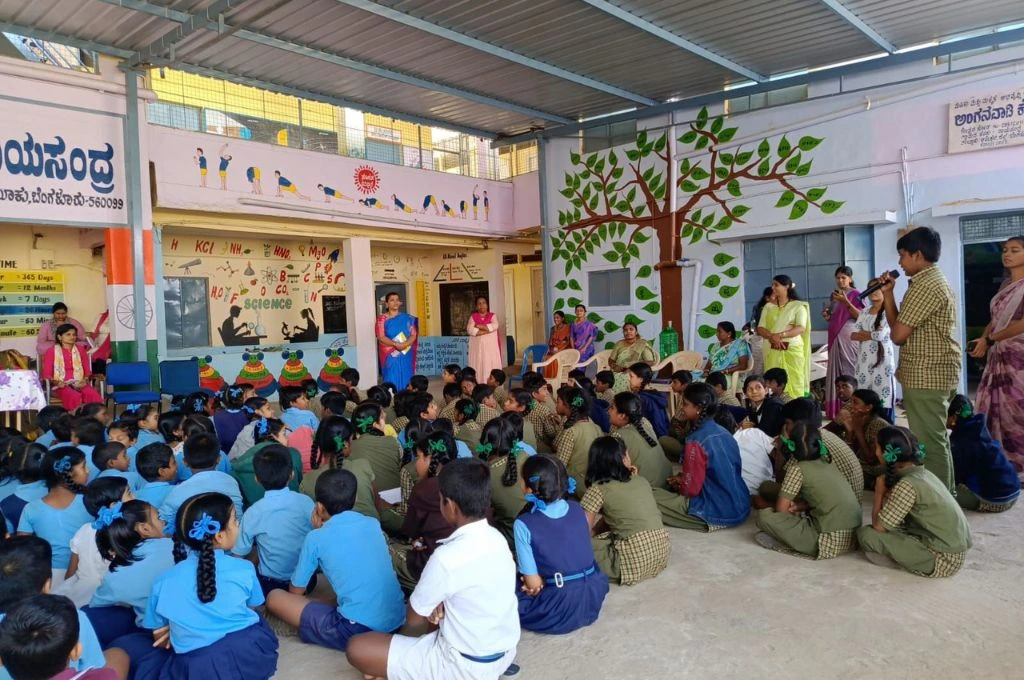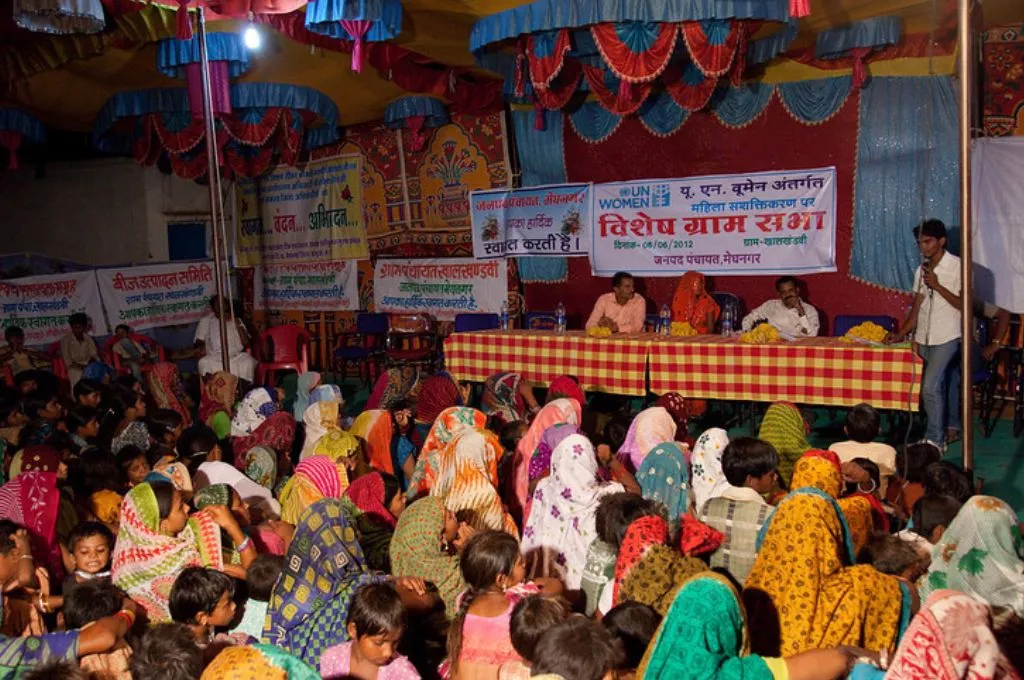Remote villages in the poorest regions of India are disproportionately dependent on government services. With its constitutional mandate to advance welfare and justice, the State has both the legitimacy and the scale to drive transformative change. Recognising this, Transform Rural India (TRI) Foundation’s approach is anchored in activating and strengthening government systems by partnering with public institutions, amplifying citizen voices, and enabling last-mile delivery to unlock development at scale in India’s most underserved geographies.
TRI, which focuses on one lakh stranded villages in the country, is intentional and purposeful about working with the government. Unlike organisations that engage from outside government systems through advocacy, pilots, or consultancy, we have institutionalised a co-creator model by embedding cells known as Design and Strategic Support Units across rural-facing government departments.
While outside approaches influence the ‘what’ of government action, this mode of engagement shapes the ‘how’. The teams engage with the public system on the design and implementation of state- and national-level government programmes and schemes.

Embedded units facilitate continuity of reform beyond project cycles or political transitions. They also provide an organisation access to system-level levers of influence rather than isolated non-governmental pilots.
Working on government programmes such as the Aspirational Districts Programme, National Rural Livelihoods Mission (NRLM), and Mahatma Gandhi National Rural Employment Guarantee Act (MGNREGA), TRI has gained insights on state–civil society collaboration.
Work with the mandate
At TRI, we focus on rights that are already constitutionally mandated: by an act, a policy, or a guideline. Our inputs are grounded in the government’s mandate and presented as ways to help the government deliver more effectively instead of as external critiques. This alignment reassures the public system that we complement their existing delivery mechanism.
Our Public Policy in Action (PPiA) approach is about working with the public system to make government programmes sharper, stronger, and more effective. We bring insights, evidence, and experiences from the community as well as clear processes to programme design and delivery. We also set up demonstration and immersion sites to show how solutions can work at scale.
Frontline departments are often stretched thin. A district collector, for instance, is responsible for innumerable schemes at once. In such a situation, the focus naturally shifts to meeting deadlines and ensuring files move. Even when officers are aware of gaps, they may not have the time, data, or technical support to rework processes or innovate. That is where organisations such as ours can step in. Nonprofits can add value to strategy, roll-out, monitoring, and adaptation of a programme.

Sometimes, of course, our field insights do not fit neatly within the contours of the government’s mandate. For instance, while working with the State Rural Livelihoods Mission (SRLM) cadres, we noticed that women brought their children to trainings. The framework did not have budgetary provisions for creche support. Instead of pressing for a new line item, we focused on a workaround that allowed participants to travel with a caretaker.
There have also been occasions where the government’s perspective reshaped our own. For example, while designing a monitoring system for the NRLM, we created what we thought was a comprehensive tool that tracked household production, income, and progress. When we shared it with the District Mission Management Unit and tested it with frontline functionaries, we realised it was too lengthy and that the data on precise production or surplus was difficult for women to provide.
Strengthen insight from the community
In the public ecosystem, the officials are accountable upward—to their seniors—and there is a gap in community connection. A robust understanding of how people think about their own livelihood and prosperity should inform government action. Nonprofits can play a vital role here by bringing insight and evidence from the community and offering field-tested solutions.
When the government initiates a livelihood plan, for instance, nonprofits can go to communities and ask them for their list of demands—infrastructure, skilling, finance, market, or technology. They can train local governance institutions or community-based organisations—women self-help groups (SHGs); cooperatives; collectives for forest protection, education, health, etc.—to collate local demand and create consolidated plans for the prosperity of their villages.
Nonprofits have more room for experimenting with innovative solutions than the government. At TRI, we run Community Action Labs (CALs) in 32 blocks of four states: Chhattisgarh, Jharkhand, Madhya Pradesh, and Uttar Pradesh. These help us test the efficacy of a model and collect evidence. Not every experiment works, but failures help in redesigning programmes and interventions. For instance, we piloted a lemon grass–processing enterprise for women’s SHGs, linked to a state subsidy scheme. On paper, the subsidy covered machinery and start-up costs, and we assumed this would guarantee success. But, in practice, we found that the equipment was underutilised due to the energy required to run it and recurring costs of packaging and transport, not covered by the subsidy. The farmers also struggled with technical operations. The quality of grass was not good and there was no market for the quantity being produced. The unit became idle within months. We learned that subsidies alone do not ensure sustainability; investments in training, market access, and working capital are critical.
The government, which is larger and has less room for mistakes, can pick effective prototypes and scale them across regions.

Engage with each tier of the government
For a holistic outcome in even a single village, it takes coordination between many government departments at all levels: national, state, and district. Each level plays a unique role in shaping outcomes. At the national level, ministries set policy, design flagship programmes, and allocate large-scale resources. By engaging here, nonprofits can ensure that scheme design and pitches are sensitive to local needs. State departments translate national policies into state-specific strategies, guidelines, and budgets. Presence at this tier allows us to align state priorities with community demands, secure official advisories, and create enabling conditions for districts to act.
Embedding units across all tiers of administration can help nonprofits combine community knowledge and innovation with the government’s scale.
Our most meaningful engagement takes place at the district level, as district administrations act as the fulcrum for convergence. The district collector, deputy commissioner, or district magistrate—the nomenclature varies based on state—is the true implementer. They coordinate work across departments, integrate central and state schemes, and facilitate partnerships.
Several of our pilot initiatives—including the development of mango orchards, agroforestry models under MGNREGA, and solar power-based irrigation—have been institutionalised and scaled up at both the state and national levels only because we have a presence at the district level.
Being embedded in all these tiers helps carry local demands upward so that community voices shape higher-level decisions, while also ensuring that policies and funds flow downward more effectively to reach the last mile. It also enables bottlenecks to be addressed from different angles—when programmes stall at one level, engagement at another can unblock progress. Most importantly, this multi-tier presence builds trust both ways—the government views nonprofits as partners, and communities see that their aspirations are not confined to local forums but influence decisions at higher levels.
Apply the best minds to the challenge
Our biggest learning has been that it doesn’t take a sector expert to come up with the best solutions; what the ecosystem needs is inventive thinking. We run a fellowship programme that places young, motivated professionals with district collectors. For two years, each fellow offers techno-managerial support to the administration on strategy, planning, implementation, and monitoring of large public programmes.
This exchange has thrown up some of our best ideas. For instance, on a visit to a remote village in a hilly area, a fellow witnessed a community resource person take an injured person to a hospital on a motorcycle because an ambulance couldn’t reach the location. This triggered the adoption of bike ambulances, which are now a standard in many states with hilly terrain and villages that are hard to access. Another fellow in Chhattisgarh, a doctor, realised that women are tested for anaemia for the first time only when they get pregnant. As a result of the fellow’s recommendation, adolescent girls are now tested in school and offered corrective nutrition.
Maintain internal systems for autonomy and continuity
As we work inside the public system, it is also important to maintain a clear and separate reporting structure and system for knowledge management. Annual conferences, meetings, town halls, check-ins, and reviews are necessary to keep the team aligned with community needs and organisational values, as well as to avoid being absorbed entirely into government routines and losing institutional identity.
It is crucial that the internal knowledge management system captures both quantitative and qualitative data. The first is drawn from the management information system (MIS) and dashboards that measure coverage, outcomes, and efficiency. Qualitative data reflects community feedback, field-level experiences, and contextual nuances that determine whether a programme succeeds or falters.
What we choose to document is guided by its relevance in improving decision-making, its potential to be replicated in other districts or states, and its role in safeguarding institutional memory. For example, while an MIS report might record how many SHGs accessed credit, a field note on how a women’s group negotiated with the local panchayat captures lessons that can inform strategy elsewhere. Our learning and feedback team ensures an efficient feedback loop.
Early on, we put much of our energy into demonstrating village-level pilots, believing that effective models would naturally find their way into government systems. What we discovered was that without being anchored in state and district planning processes, even the best pilots struggle to scale.
We also realised that change cannot hinge on individual champions. While supportive officers are invaluable, the real strength lies in building institutional pathways that continue even when people move on.
Shila Matang, senior practitioner at TRI, contributed to this article.
—
Know more
- Learn what nonprofits and funders can do to work effectively with government.
- Read about why collaboration falls apart.
- Listen to this conversation between nonprofits in India on the hidden challenges of collaboration.





